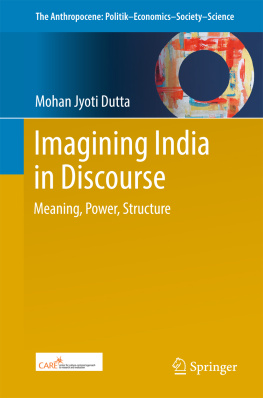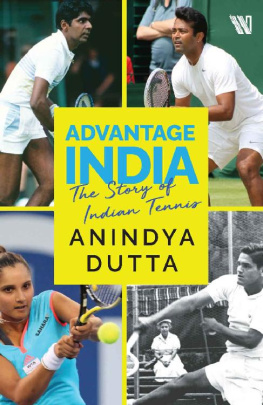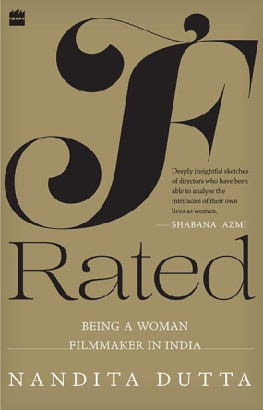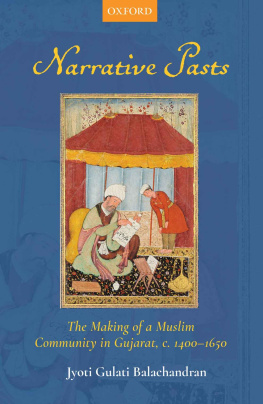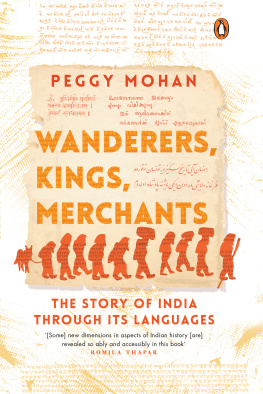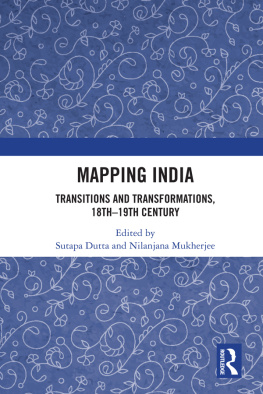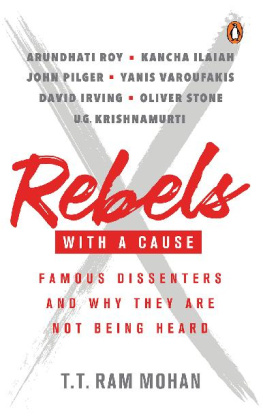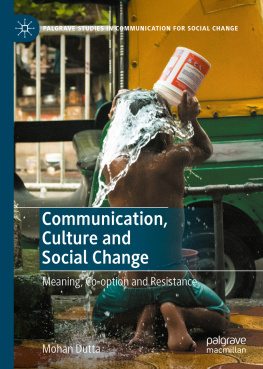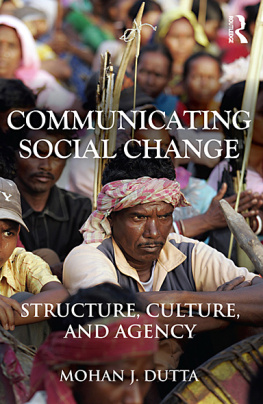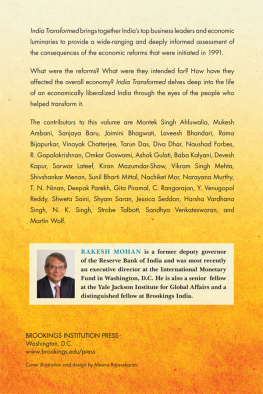1. Imagining India in Discourse
The economic rise of India has been the defining event of my life. It is not only good news for its 1.2 billion people, but also an instrument for the good of the world. At a time when Western economies and their way of doing business is under a cloud, a large nation is rising in the East based on political and economic liberty, proving once again that open societies, free trade and multiplying connections to the global economy are pathways to lasting prosperity and national success. (Das 2013: 271)
The story of a growing India that has emerged on the global stage as a leader is the theme of Das (2013) India grows at night: A liberal case for a strong state. The story of a new India and its burgeoning aspirations is a story of economic growth and integration into the global free market. The story of India stands in as an invitation to liberty constructed in the image of the free market. The narrative of Indias rise is a dominant narrative in discourses of and discourses on India. Essential to this narrative is imagination.
Imagination both constitutes the idea of the nation state as a geographic space weaved together into a community and is constituted by the spatial markers of the nation state. As Anderson (2006) eloquently captures in Imagined Communities, a nation is brought into being through active processes of communication that are realized through the act of imagining. The symbolic resources of imagining make up the nation state. The image of the nation registered in its imagination is a symbolic artifact, constituted through discursive processes, and is also material in its relationship to specific policy formations and the ramifications of these policies. Discourse is the bulwark of the national imagination because identity must be narrated (Anderson 2006: 204). Communication is the basic resource of material transformations carried out in the realm of local-national-global policies, with specific material implications. Simultaneously, imagining the nation forms the bases for economic, social, and cultural policies. What is the relationship between imagination and constructions of nationhood? What do we learn from particular discursive formations about the imaginations of a national space? How is imagination constructed in national discourse?
This book grapples with the imagination of India that formed the basis of the political and economic reforms introduced in the 1980s and accelerated through the 1990s into the 2000s (Ahmed et al. 2011a, b). Of particular interest for the analysis offered here is the very idea of imagination that is presented centre-stage in national discourse. It is after all the narrative of imagination and the act of imagining India that occupy centre-stage in Indias liberalization discourse (Chopra 2003). Through an analysis of the discourses of imagining the nation in India, this book offers a template for interrogating the interplays of the ideas of the state, market, development and civil society that are represented in neoliberal frameworks of economic reforms. Neoliberalism, as a universal logic of political-economic governance globally, is a complex web of political and economic thought that considers at its heart the principle of the free market as a driving mechanism for political, economic, and social organizing (Harvey 2003, 2005). The universality of neoliberalism lies in its seductive appeal of explaining the entirety of social reality across global spaces on the principles of the free market, constructing as universal the modality of governance dictated by the spirit of the free market based on an individualist micro-economic model (Bourdieu 1998: 9). Under the narrative of the free market, human potential is maximized when the limits imposed by the state are minimized, thus enabling a catalytic climate for growth, productivity, and efficiency. How then does the neoliberal imagination take root within specific global contexts? What is the nature of the neoliberal imagination that emerges in the layers of specific locally constituted spaces of political and economic transformation? While the analysis offered here specifically focuses on the context of India, it broadly offers insights into the re-workings of national discourses at globally dispersed and interconnected sites of neoliberal globalization.
The media are centrally situated in the construction of the nation and in the deployment of the trope of the nation for specific political and economic agendas. As Anderson (2006) so richly demonstrated in his work, nationalism is imagined into being, constituted through the powerful role of the institutions of print capitalism. Here Anderson highlights the role of communication technologies as sites for producing, reproducing, and circulating imaginations of the nation state. The nation state comes to be seen and understood through discourse, which in turn is made possible through communication technologies. The nation emerges in its media, with the media circulating symbolic resources that congeal the nation, bringing it into being. The aspirations of the nation and its pathways of movement are crafted out through mediated narratives. The mediated narratives examined in this book are constituted around imagining the nation state. The subject of these narratives in other words is the very imagination of the nation state.
Particularly salient in the imagination of the Indian state is the continuous reworking of Indian culture to articulate the narrative of the state. The idea of culture is both projected as a barrier to the linear trajectory of the nation state, and is simultaneously the resource that is reworked in the imagination of the nation. It is after all a revival of a national culture that remains the subject of discourses of economic reforms. In The nation and its fragments, Chatterjee (1993) engages in a dialogue with Anderson to suggest postcolonial constructions of nationalism in the realms of the inside and the outside of the nation state. In other words, the work of the state is as much in the inside as it is in the outside. Whereas the outside is the material, the inside is the realm of the spiritual, or what Chatterjee depicts as cultural. He goes on to note:
The colonial state, in other words, is kept out of the inner domain of national culture; but it is not as though this so-called spiritual domain is left unchanged. In fact, here nationalism launches is most powerful, creative, and historically significant project: to fashion a modern national culture that is nevertheless not Western. If the nation is an imagined community, then this is where it is brought into being. (p. 6)
What then is the reworking of the inner domain of national culture amid the large scale political and economic liberalization of India? What is the cultural identity of the nation that is voiced amid the large scale political and economic reorganizing of the nation state? As Chatterjee depicts with nuance, the networks of printing presses in Bengal for instance emerged around the development of the Bengali language as a register for the modern culture, thus located in a space of sovereignty outside of the power and control of the state and the European missionaries. Culture is historically distinct from the economic, but is reworked under neoliberalism as intertwined with the economic arena. It is depicted as being beyond the spaces of governability of neoliberal reforms in India and is simultaneously integral to the reworking of the Indian imagination. The inside and outside thus exist in separate and intertwined forms. Particularly salient are the discourses of reforms narrated in the English language press as sites of elite participation and co-construction of the national agenda.

